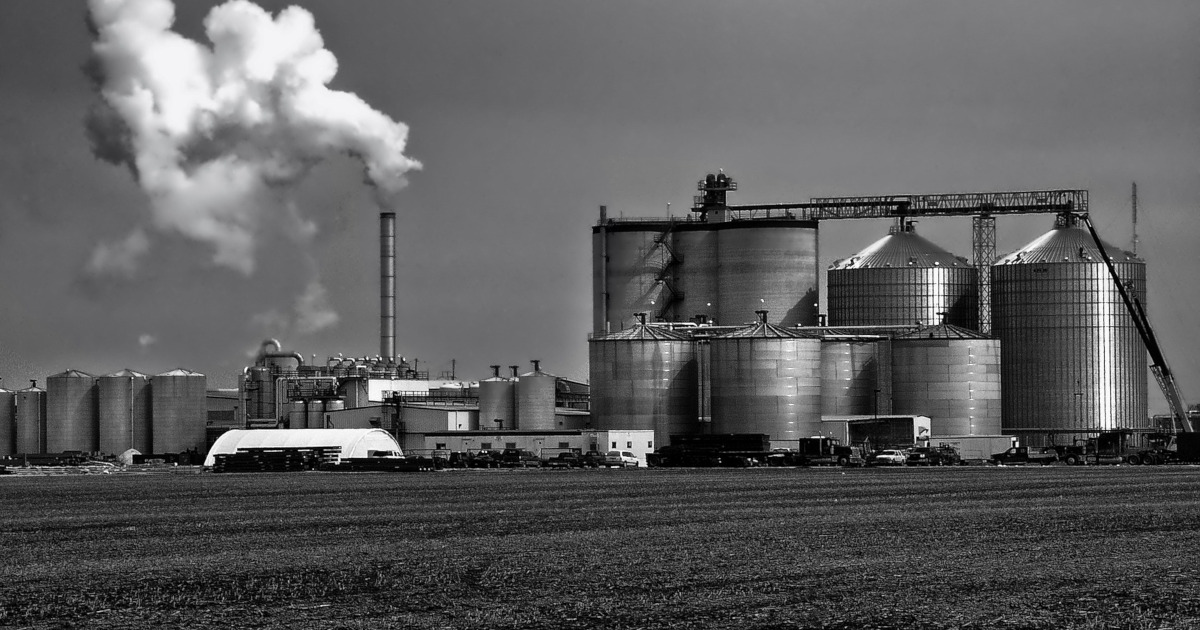
Ethanol Plant Using Treated GMO Corn Poisons Town
The company AltEn secured a free source of corn to make ethanol by billing itself as a “recycling” plant that accepts seeds treated with pesticides, including toxic neonicotinoids. The resulting waste is too contaminated to sell as feed for animals, so AltEn has been spreading the waste on farmland and holding the rest of it on the grounds surrounding the plant.
January 20, 2021 | Source: Mercola.com | by Dr. Joseph Mercola
Mead is a village in Saunders County, Nebraska, with a population of just 580 people.1 Their website focuses on what they do best: small town living. “If you’re ready to escape the city, come join us in Mead, Nebraska,” their official site reads.2 This close-knit farming community is also home to AltEn,3 an ethanol plant that is producing toxic byproducts that are poisoning the community.
“It’s definitely within sniffing distance. I come out here to do yard work and I can barely breathe,” Jody Weible, who lives half a mile from the plant, told a news outlet.4
The stench is coming from a byproduct of ethanol production called distillers grain, which is produced after the starch is removed from corn. Also known as “wet cake,” distillers grain is sold by most U.S. ethanol plants as livestock feed, but AltEn’s waste is different.
The company secured a free source of corn to make ethanol by billing itself as a “recycling” plant that accepts seeds treated with pesticides, including toxic neonicotinoids. The resulting waste is too contaminated to sell as feed for animals, so AltEn has been spreading the waste on farmland and holding the rest of it — a “smelly, lime-green mash of fermented grains” — on the grounds surrounding its plant.5
Pesticide Contamination ‘Off the Charts’
Neonicotinoids are the most widely used insecticides worldwide.6 If you were to visit a conventional farm, you’d likely see evidence of their use in the form of brightly colored red corn seeds and blue soybean seeds, which are color-coded to denote treatment with neonicotinoids. Even when used agriculturally, these seeds have been found to harm pollinators like bees at alarming rates.7
There are other concerns as well, like the fact that planting neonicotinoid seeds kills off insects that prey on slugs — prominent corn and soybean pests — thereby reducing crop yields.8
They’re also known to persist in the environment. When researchers screened oilseed crops in the European Union for neonicotinoids during the five-year moratorium, they found neonicotinoids in all the years it was banned in bee-attractive crops, with residue levels depending on soil type and increasing with rainfall.
They concluded that this poses a “considerable risk for nectar foraging bees” and supports “the recent extension of the moratorium to a permanent ban in all outdoor crops.”9 In 2018, the European Union banned the outdoor use of three neonicotinoids (clothianidin, imidacloprid and thiamethoxam), while the United Nations has also recommended severely restricting their use.10
They’re still widely used in the U.S., however, and in Mead, where the excess waste from the treated seeds is piling up, astronomical levels of the chemicals have been detected.
Natural Resources Defense Council (NRDC) attorney Dan Raichel told The Guardian, “Some of the levels recorded are just off the charts. If I were living in that area with those levels of neonics going into the water and the environment I would be concerned for my own health.”11
In the U.S., the Environmental Protection Agency has set an upper “safety” limit of 70 parts per billion (ppb) for neonicotinoids in food and water, while levels deemed “safe” for aquatic life are capped at 11 ppb for clothianidin and 17.5 ppb for thiamethoxam. Yet, The Guardian reported:12
On the AltEn property, state environmental officials recorded levels of clothianidin at a staggering 427,000ppb in testing of one of the large hills of AltEn waste. Thiamethoxam was detected at 85,100ppb, according to testing ordered by the Nebraska department of agriculture.
In an AltEn wastewater lagoon, clothianidin was recorded at 31,000ppb and thiamethoxam at 24,000ppb. A third dangerous neonic called imidacloprid was also found in the lagoon, at 312ppb. The EPA aquatic life benchmark for imidacloprid is 0.385ppb. AltEn’s lagoon system holds approximately 175m gallons.
High levels of 10 other pesticides were also found in the plant lagoon. At least four pesticides in the corn used by AltEn, including clothianidin and thiamethoxam, are known to be ‘detrimental to humans, birds, mammals, bees, freshwater fish’ and other living creatures, state regulators noted in an October letter to AltEn.
Sick Dogs, Dead Bees and Birds Reported
The area’s residents are already experiencing ill effects they attribute to the pesticide-laden waste. Pet dogs have become sick after ingesting waste dumped on farm fields, and dying birds have also been reported.
Nebraska’s department of agriculture eventually told AltEn to stop spreading the waste on fields, so the company piled up more of the waste on site as well as began incinerating it or storing it offsite in “biochar” bags.13
State regulators aren’t monitoring for contamination near AltEn’s Mead plant, but researcher Judy Wu-Smart, with the University of Nebraska’s department of entomology, believes area insects are being decimated. The university has a research farm about 1 mile from the city, where every beehive has died, and the bee deaths are associated with AltEn’s usage of pesticide-treated seeds.
She also has evidence of birds and butterflies that appear to be neurologically damaged, and found residues of neonicotinoids in plants, which she traced to waterways connecting the land to AltEn. In an interview with The Guardian, she called the findings a red flag, noting, “The bees are just a bio-indicator of something seriously going wrong.”14
